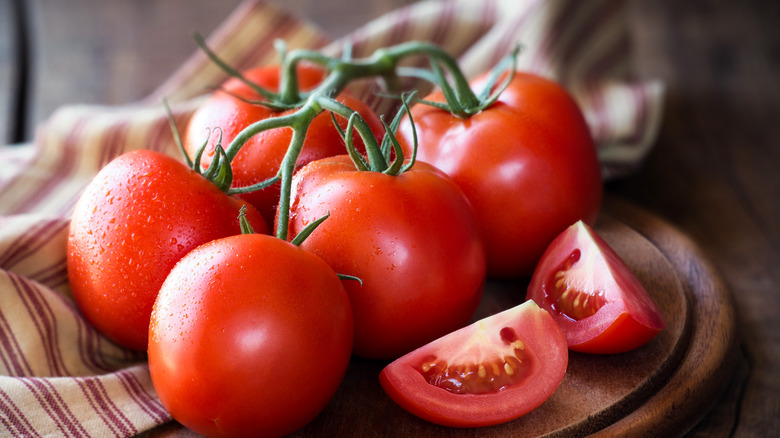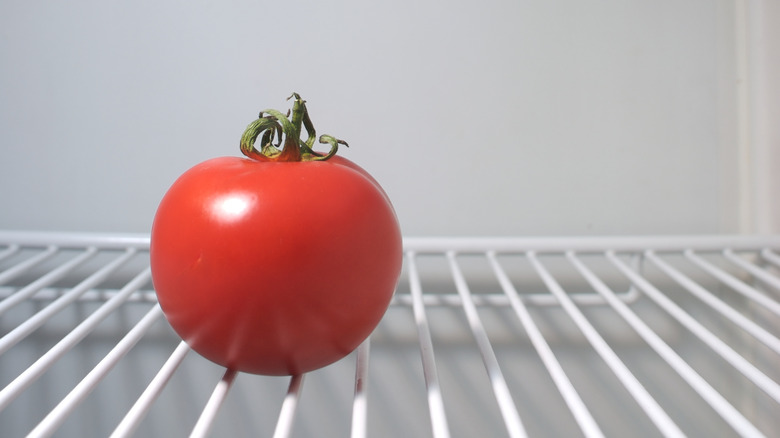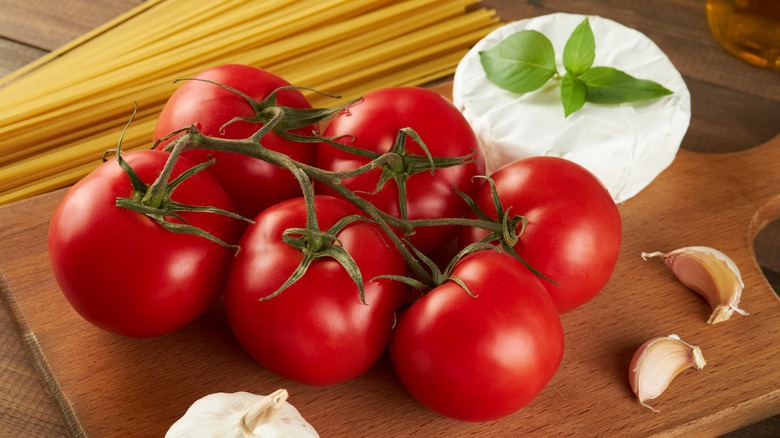You've Probably Been Storing Your Tomatoes Wrong
We may receive a commission on purchases made from links.
There are few things more disappointing than biting into a luscious fresh tomato and getting a mouthful of flavorless, mealy mush. Some people blame contemporary farming's emphasis on quantity over quality. Tomato plants that mass-produce simply aren't as tasty as ones with lower yields. Others say it's due to commercial growers tossing their tomatoes into ethylene-filled chambers to turn them red — though not ripe.
The truth is that the problem's actually closer to home. That's right: We ruin our tomatoes ourselves.
Tomato season runs from mid-summer to the first frost, a time when many of us are looking to escape the heat of the kitchen with recipes that require little to no cooking. From classic bruschetta to a tangy gazpacho to a simple plate of sliced beefsteaks drizzled with balsamic vinegar, fresh tomatoes meet the moment. Unless, it turns out, you're in the habit of storing those tomatoes in the fridge.
Your fridge: where tomatoes go to die
Craig LeHouillier, author of "Epic Tomatoes: How to Select and Grow the Best Varieties of All Time," told The Kitchn that refrigeration compromises taste and texture. He says, "The texture changes to something a bit more mushy, which I don't find at all pleasant. He also notes in his book that the natural chemicals in tomatoes that boost flavor are noticeably absent at lower temperatures, resulting in what he calls a "flat" taste. "I like to taste exactly what the genes in the tomato were coded for!" he told The Kitchn.
It's especially important not to put unripe tomatoes in the refrigerator, since they need warmth — just like in the garden — to come to rosy readiness. The Florida Tomato Committee advocates ripening them at room temperature stem side up to prevent the fruit's delicate "shoulders" from bruising. Food columnist and cookbook author J. Kenji Lopez-Alt, on the other hand, recommends placing tomatoes stem side down to retain moisture and keep bacteria out. LeHouillier says it doesn't matter which side is up — just remember to avoid placing the tomatoes in direct sunlight, or they might ripen too quickly.
Pop ripe tomatoes in the freezer to save them for later
Once you've got your hands on a few good, ripe tomatoes, pick a great recipe to show off their sweet, summery flavor. Consider this no-cook pasta sauce, a throwback to 1982, from Sheila Lukins and Julie Rosso's "The Silver Palate Cookbook." The ingredients are staggeringly simple: fresh brie, garlic, olive oil, fresh basil, linguine, and tomatoes. Combine all the ingredients and toss with hot, al dente pasta. It tastes like summer in a bowl.
If you find yourself inundated with tomatoes without enough recipes to use them up — say you overbought or your garden overproduced — rather than put them in the refrigerator it's better to freeze them. Make sure your tomatoes are ripe, then boil them whole for 30 seconds, slip off the skins, and freeze them in sealable plastic bags, or by quartering or slicing them and then freezing them. Although they'll be safe to eat when they thaw, they'll never taste as good as a fresh, ripe tomato pulled from the bowl on your counter. So skip eating them on their own; thawed tomatoes will work better in cooked dishes rather than raw.


